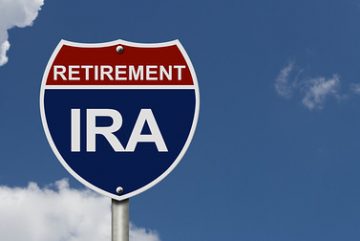Published by Taylor Financial Group
As the quarter comes to an end, many people look at the balance in their retirement account and wonder why they haven’t saved more. We have discussed many times that making regular contributions to an IRA or 401(k) Plan can help people meet long-term financial goals.
However, if you are lucky enough to have an employer sponsored plan with a provision that allows after-tax contributions, then a Megabackdoor Roth could be the answer to boosting your retirement account.
Based on the 2018 IRS Guidelines and depending on what your employer contributes to your account, you could potentially contribute your initial $18,500 (+$6,000 in catch up contributions) plus $36,500 more every year in after-tax contributions for a total of $61,000 in your 401(k).
After-tax contributions are like Roth contributions in that both are made with after-tax money and the contributions are allowed to grow tax-free. At retirement, you can roll over all of these after-tax contributions to a Roth IRA, but all interest made on after-tax contributions will be taxed upon withdrawal.
The total 401(k) contribution limit for 2018 is $55,000 (plus a $6,000 catch up contribution). To figure out how much more you could potentially contribute with after-tax contributions, subtract your pre-tax or Roth contributions and your employer contributions from $55,000. Example: $55,000 – $18,500 – $2,500 = $34,000, but don’t forget the $6,000 catch up contributions if you are 50 and over.
While this strategy may seem like an effective way to save for retirement, only about 12% of 401(k) participants contribute the $18,500 maximum.
If you have the financial capacity to take advantage of this technique, speak to human resources to make sure your plan allows after-tax contributions and in-service distributions and make your retirement savings account surge!
As always, if you have any questions or want to discuss your retirement savings, give us a call.
Limitations and Early Withdrawals: Some IRAs have contribution limitations and tax consequences for early withdrawals. For complete details, consult your tax advisor or attorney.
Retirement Plans: Distributions from traditional IRAs and employer sponsored retirement plans are taxed as ordinary income and, if taken prior to reaching age 59 ½, may be subject to an additional 10% IRS tax penalty.
Roth IRA: Converting from a traditional IRA to a Roth IRA is a taxable event. A Roth IRA offers tax free withdrawals on taxable contributions. To qualify for the tax-free and penalty-free withdrawal or earnings, a Roth IRA must be in place for at least five tax years, and the distribution must take place after age 59 ½ or due to death, disability, or a first-time home purchase (up to a $10,000 lifetime maximum). Depending on state law, Roth IRA distributions may be subject to state taxes.
Securities offered through Cetera Advisor Networks LLC, Member FINRA/SIPC. Investment advisory services offered through CWM, LLC, an SEC Registered Investment Advisor. Cetera Advisor Networks LLC is under separate ownership from any other named entity.



